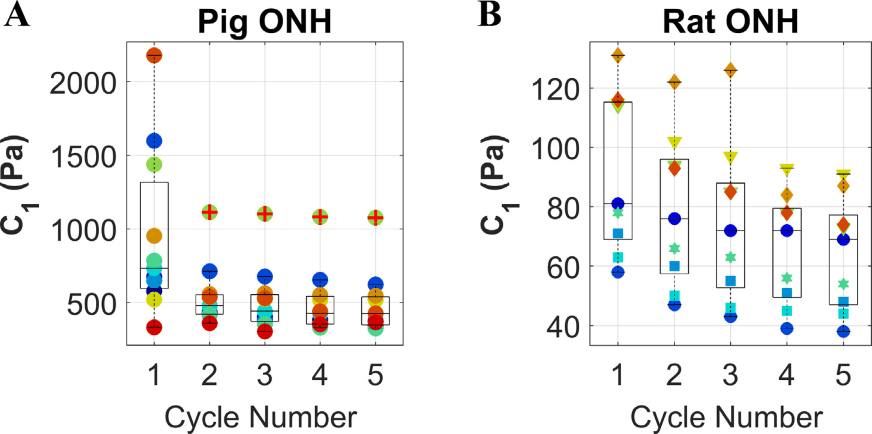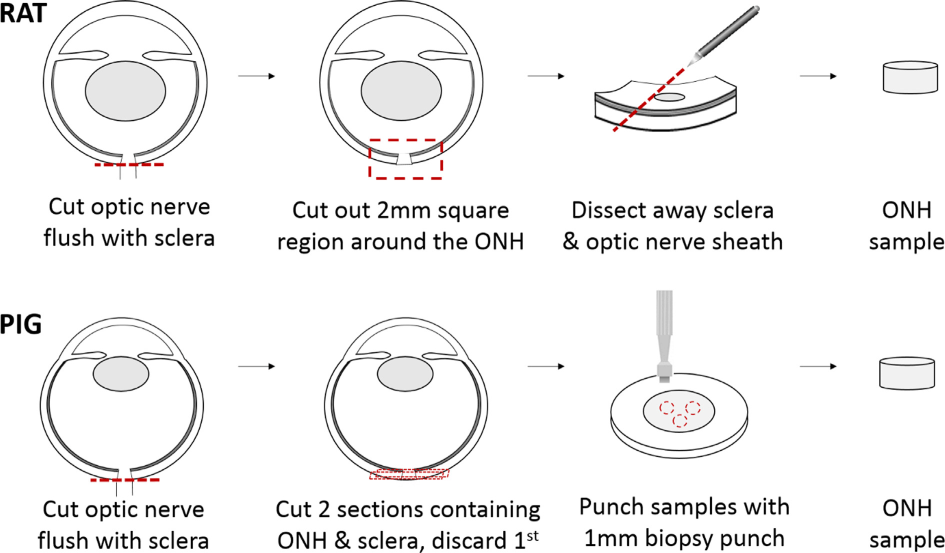Glaucoma is an optic neuropathy that can cause irreversible blindness because of the progressive damage and loss of retinal ganglion cells (RGCs). At elevated intraocular pressure (IOP), optic nerve head (ONH) tissues experience high deformations which may lead to tissue damage, restriction of blood flow and nutrient supply, pathological changes and direct RGC axonal damage. There is thus a need for a thorough understanding of the biomechanics of ONH and its mechanical strain under IOP. Dr. C. Ross Ethier and his team from Georgia Institute of Technology performed their study on rat and pig ONH tissues, opting for compression instead of the commonly published tension data as compression is the main mode of deformation in vivo at IOP.
Using the CellScale MicroTester parallel plate compression test mode and the neo-Hookean hyperelastic model, material constant C values were obtained. The team varied the strain percentage and number of compression loading cycles for both rat and pig ONH. Results gathered from their tests (shown in the graphs below) can greatly facilitate the development of animal-specific computational models and in vitro platforms to study glaucoma.

Read the full journal article here: https://doi.org/10.1016/j.jbiomech.2019.06.014
Read about Dr Ethier’s research here: https://ethier.gatech.edu/
To read about the biomechanical impact of localized corneal cross-linking, click here.








